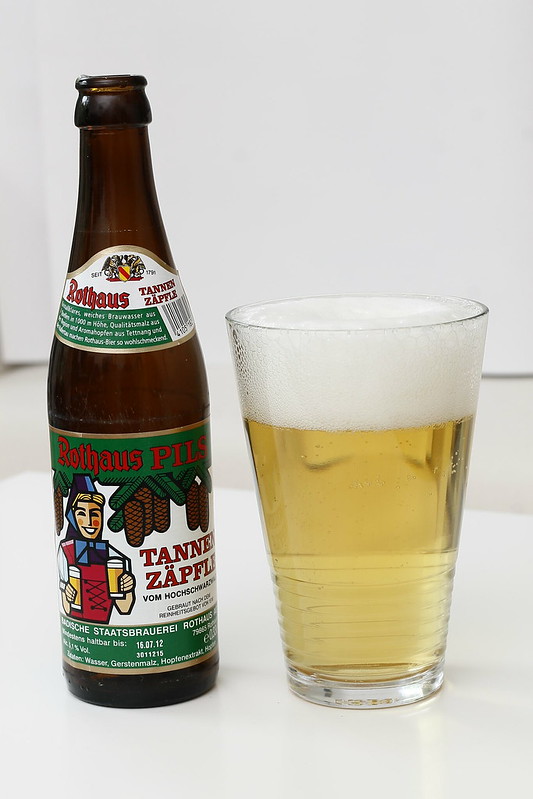It seems incredible that I have been writing about our adventures in Germany for 10 months (!) already, and I have yet to write much about beer. Every American knows that Germans love their beer, and one of the first things people think of when they think of Germany is Oktoberfest, the annual beer festival held in Munich. We didn't go to Oktoberfest (which is actually held in September) because it was quite expensive, but we have done our best to sample as many different beers as possible. Our taste tests aren't comprehensive, by far, but we're working on it :)
 |
| enjoying Kölsch with schnitzel at Oma Kleinman's |
 |
| marks on the coaster track your drinks (img source) |
First, Kölsch (said more like 'kohlsch' and not like 'koolsch'), the beer of Cologne and much of the Rhineland. When you go to a bar in Cologne, you can either get Kölsch or (maybe) Bitburger. But nothing else, unless you're at (a) a tourist bar like the Bier "Museum" or (b) a specialty shop like
Cafe Eichhörnchen (Belgian beer, chocolate, and coffee). Kölsch is always served in tall, slim 0.2 or 0.3 liter glasses, and the waiter tracks your beers by making slashes on the
Bierdeckel (coaster). I particularly like that the glasses are so small--sometimes I just want a taste, not a huge brewski! And it's not a Kölsch unless it's brewed within the Cologne city limits.
 |
| Altbier in Düsseldorf |
Germany is highly regional when it comes to beer, so you will never see Kölsch served in a Kneipe (aka, pub) in Düsseldorf, though it's only 40km north. Instead, all the pubs serve Altbier, the Düsseldorfer favorite. We especially enjoyed our visit to the charming and cozy
Füchschen Brauhaus.
 |
| (left) a Maß of Augustiner at the Hirschgarten (right) a Hefeweizen at Hofbrauhaus |
In Bavaria, and especially in the Munich area, you'll see Helles, Wie
ßbier, and Hefeweizen. The first is J's personal favorite, but Hefeweizen is also really good. (You'll notice I'm not attempting to describe how these beers taste. I'm no connoisseur, so if you want something fancier see
this site.) You can get Helles at
a beer garden in a big Maß, while Hefeweizen comes in a tall, curvy glasses.
 |
| brown beer and (delicious) hot 'mead' |
In addition to the more common Helles and W
ießbier, you also see some brown beers in Bavaria. (Apparently, brown beer was the first type of beer brewed in Germany, later replaced by the lighter beers.) We tried Schinner Braunbier and Andechs (brewed at a monastery) at the
Köln International Beer Festival in August, and both quite good.
We also really like Schwartzbier (black beer), such as Köstritzer. Though Köstrizter is brewed in Thuringia, we first tried this beer at a pub in Bonn while watching the 2013 national election results come in. I have since discovered it at a discount grocery store near our house, and I've squirreled away a few bottles for those days when we want something besides Kölsch (blasphemy!).
Lastly, Rauchbier ("smoke beer"), the much-beloved beer of Bamberg. To me, it tastes like someone dumped a bottle of barbecue sauce in a perfectly good glass of beer, but everyone was drinking it when we visited Bamberg. To each their own!
Another unique beer that Jeremy discovered in the Black Forest region is called
Tannenzäpfle ("little fir cones"). It's brewed by a state-owned company called Rothaus. I don't know if they actually use pine needles/cones in the brewing process or not, but either way it's a very unique, refreshing pils, and sometimes we find it in stores here.
Wherever we travel, we like to try the local style of beer, and we have discovered some really delicious beers that way. Despite the pu
rity law (Reinheitsgebot) that severely limits the ingredients used in German beers, there's a surprising variety. I especially enjoy learning about all the traditions that come along with each area's beer, from the shape of the glasses to the decorations in the pubs or beer gardens.
We just got back from a week in Vienna, and I'll be writing more soon!










No comments:
Post a Comment